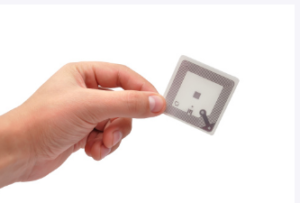RF readers, which combine an antenna and transceiver, read RFID tag data. They may be fixed or mobile. Active tags contain batteries with sensors for longer read range and memory storage capabilities than passive ones.
RAMP RFID tags Australia provides inventory control beyond simple barcodes by instantly checking in shipments, shortening cycle counts, and helping set safe stock levels.
Tracking
 RFID tags allow companies to optimise logistics processes by tracking inventory and assets such as equipment or products throughout their supply chains, improving inventory accuracy and production quality. It enables companies to maximise operational efficiencies.
RFID tags allow companies to optimise logistics processes by tracking inventory and assets such as equipment or products throughout their supply chains, improving inventory accuracy and production quality. It enables companies to maximise operational efficiencies.
RAMP RFID tags Australia consist of a small microchip and antenna connected by wire. The microchip stores a unique code and then transmits it to a reader upon certain stimuli. Meanwhile, its antenna reflects RF energy from readers, powering and sending data directly to connected systems like databases, scanners or computers.
Passive RFID tags reflect RF energy onto a reader, while active ones broadcast their signal at greater distances using batteries and transmitters. Active tags also have the capacity for more storage and longer read ranges, making them ideal for high-accuracy tracking solutions. Unfortunately, their tracking capabilities have led to privacy concerns from individuals concerned that they’ll be tracked without their knowledge while living their daily lives.
Inventory Management
RFID inventory control methods offer many key benefits over traditional methods, including decreased manual and data entry errors, increased accuracy, enhanced visibility and more effective inventory tracking. All these improvements contribute to reduced labour costs and stock discrepancies or lost inventory costs.
Passive RFID tags, commonly called transponders or inlays, contain an integrated circuit that communicates with readers via radio frequency waves. The IC is protected from moisture, dust, and UV radiation by layers of materials that ensure printability and durability.
When the tag reader probes an IC tag, its ID responds with unique identifying data, enabling RFID systems to track items’ locations in real-time and update inventory databases accordingly. Warehouse and workers can access this data with mobile phones to optimise picking, replenishment and storage operations while improving reordering, stocking, and decreasing shrinkage due to misplaced or stolen inventory.
Asset Management
Add RFID technology to a company’s inventory tracking system, and it becomes possible to track items’ locations and provide real-time updates on supply chain status. Furthermore, RFID systems monitor asset health and alert staff of issues needing attention or repair.
RFID tags need to be within range of a reader and use the same radio frequency (frequency band). Each tag encased in plastic or paper contains a microchip and antenna; information is sent and received between the antenna and microchip through the integrated circuit.
The integrated circuit (IC) may be passive or active and include security features to safeguard data privacy. When selecting an RFID tag, its form factor and data storage capacity should all be considered. Antennas come in various shapes and sizes that can either be integrated into a reader or stand-in as separate components; fixed readers are more commonly utilised for industrial applications, while handheld models are typically used for retail and logistics applications such as mounting on mobile computers or in sleds are popular choices.
Maintenance Management
RAMP RFID tags Australia work without requiring direct line-of-sight, meaning workers don’t have to turn boxes over or apply barcodes individually – making scanning items faster.
RFID allows manufacturers to track and manage returnable assets like containers or pallets more effectively, helping optimise supply chains while decreasing shipping, storage and handling costs.
RFID can also aid in maintenance management by keeping tabs on equipment usage or operating hours and reducing loss due to neglect or theft. Furthermore, it alerts staff when equipment requires servicing to reduce unexpected breakdowns.
Inventory management is a key business function that involves tracking and updating stock levels and monitoring the movement of items through warehouses and distribution centres. Efficient inventory control can boost profit margins by reducing costs while also helping to prevent theft and other losses. New technology, such as RFID tags, is being used to optimise this process and provide greater transparency across the supply chain.